How to apply to become an e-Resident of Lithuania

As you know, I applied to become a Lithuanian e-Resident recently. The e-Residency program of Lithuania is not as polished as its Estonian counterpart yet, but I consider myself an early adopter of these initiatives.
The process is still not completely intuitive, and there are some rough edges to polish. In this post, I explain how you can apply to become an e-Resident of the baltic country.
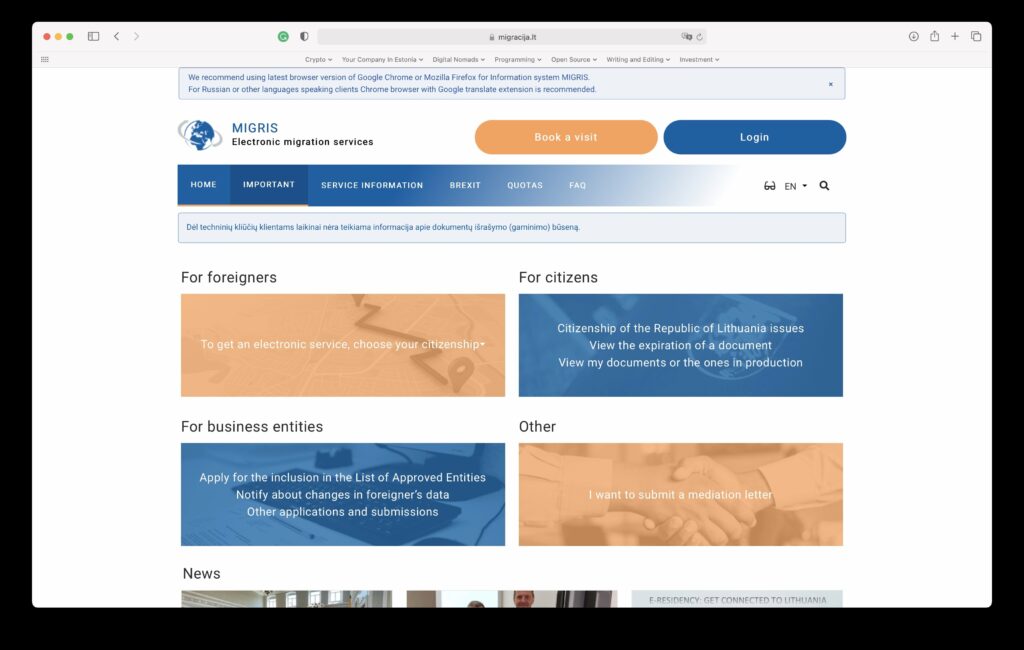
Getting started
First, visit the homepage of the Lithuanian Migration Department. Once there, click on “For foreigners”, and choose your country of citizenship. Then, open the “I want to become an e-Resident” tab and click on “Next”.
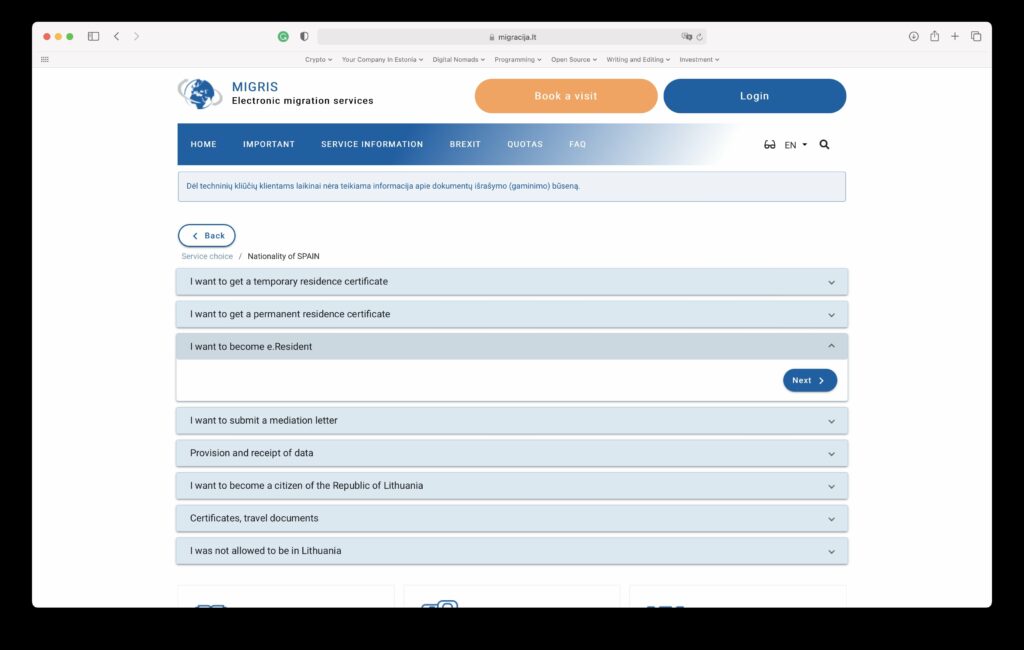
The user interface is very 90s-looking. So expect many of these interactions of going through lots of options in tabs or empty accordion sections that you need to expand just to click on a “Next” button.
Another section, where you need to click on “I want to receive the status of an electronic resident of the Republic of Lithuania” and then “Apply request”.
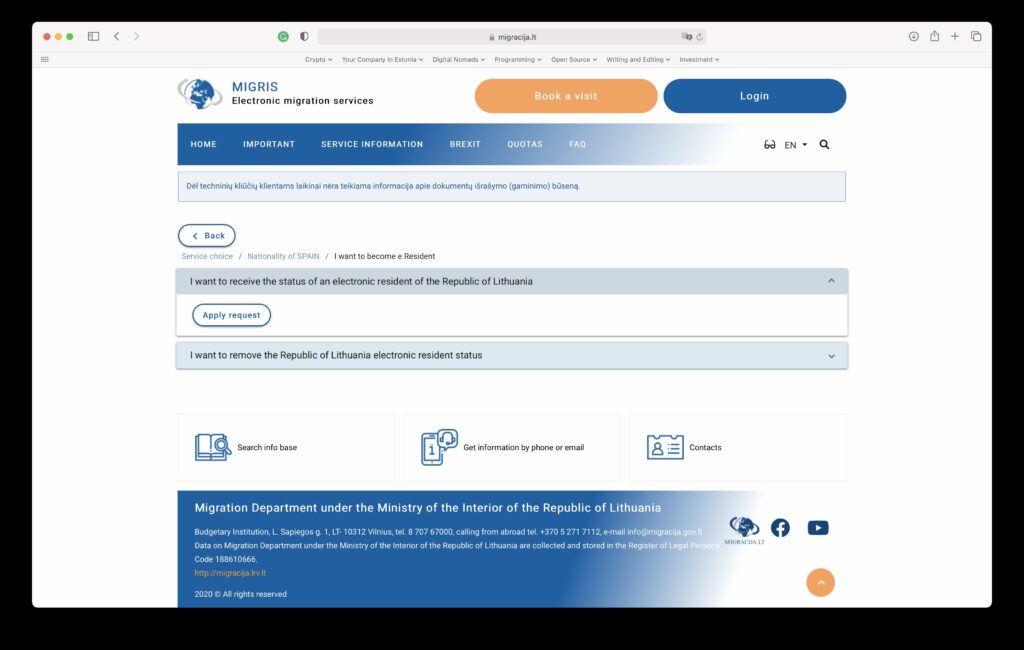
The application
Once there, as I presume you don’t have a Lithuanian ID, you have to enter your email to receive a verification code via email.
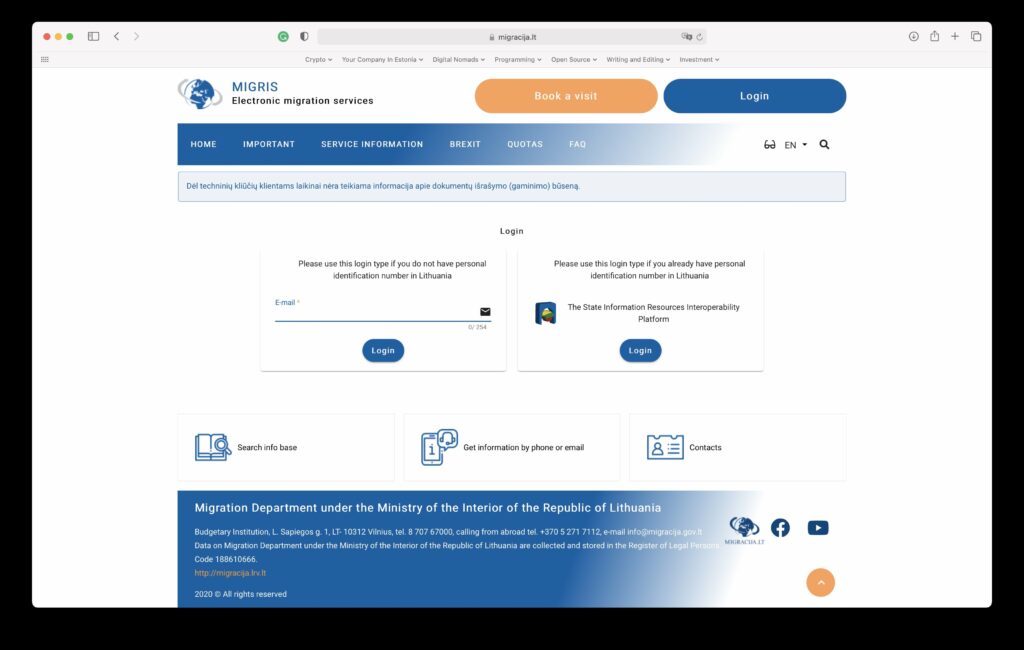
Then, once done, you have to enter some more data (full name and phone number).

Now we get to the main application form which, honestly, was a little bit confusing for me.
First, you are asked about your identification number. There are three fields, and (unless you have a Lithuanian ID number) should enter your ID or passport number in the third one: “Identification code in a foreign state (if such a code is provided in a foreign state)”. In my humble opinion, having a dropdown where you can choose the identification type, followed by a field where you enter the ID number, would be a much better choice.
But anyways, you will also need to enter your name and surname (again), and date of birth.
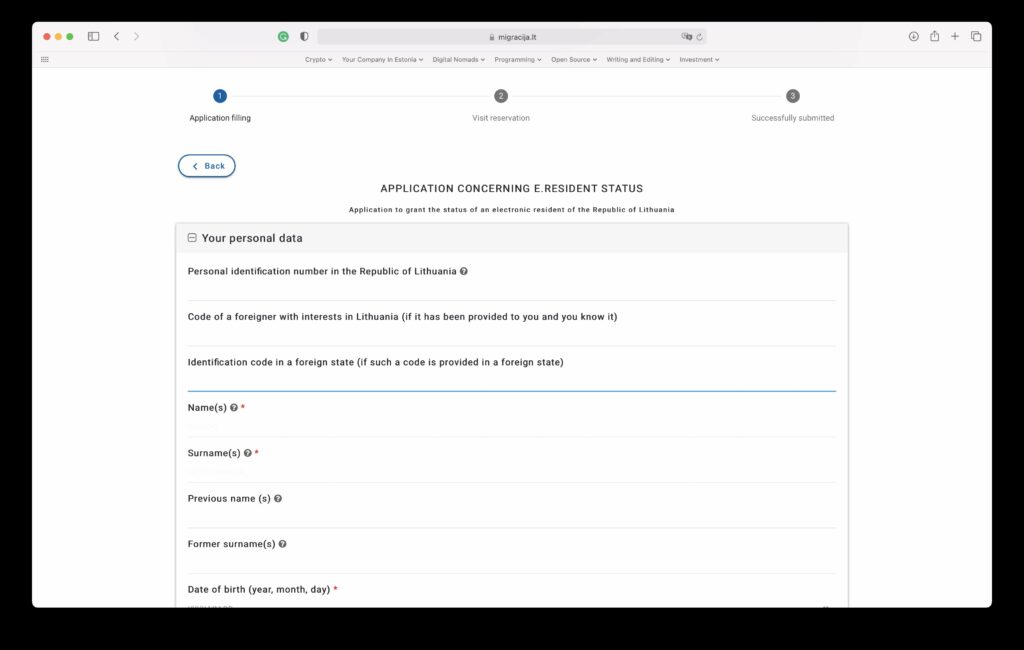
Then, you have some of these questions you are expected to answer with a “No”, like when you travel to the US and they hand you out this form when they ask you things like “Are you coming to the US to attack the president of the United States?” (damn! I should say “No”, but I’m just such an honest guy, I’ll say the truth and hope they appreciate my integrity…). These are your typical questions about your criminal background.
You also need to answer how you intend to pay in the cryptic field “Data on the payment of the status fee”. You can pay when you pick up your e-Residency card later, or even through wire transfer, but I chose to pay using the government payment gateway.

Finally, you just have to accept to the terms of use, the disclaimers, and other legal blableh, and do a reservation to pick up your e-Residency pack. Unlike Estonia, Lithuania has no pick up locations outside of the country (yet?), so you will need to travel there to get it.
The fact that you need to schedule a visit right away is kind of inconvenient. Especially during COVID times, you may not know if (and when) you are going to be able to travel to the baltic country. You can appoint someone to pick it up for you, but I don’t really see the point unless you have a family member, friend or someone you trust in Lithuania.
It seems that, starting 2022, your business provider will be able to send your pack to your location, but I am not sure how that’s going to work, and how they are going to ensure that nobody (either the provider’s staff or someone during the trip) is going to have unauthorized access to it. This is an extra point for Estonia. They have managed to combine security with conveniency, at least, if you live close to a pick-up location.
Payment
So after scheduling your pick-up appointment, we are ready to pay, or not? You get to this page, where you are asked to choose the amount to pay. So that was a huge WTF moment.

There was no indication of the amount to pay, only a link that says “State fees can be found here”, but it’s lying. It takes you to another website of the Migration Department (in Lithuanian) with no information about fees. So I looked for “state fees” and “fees” in the search section of the website, and looked through all the pages without success.
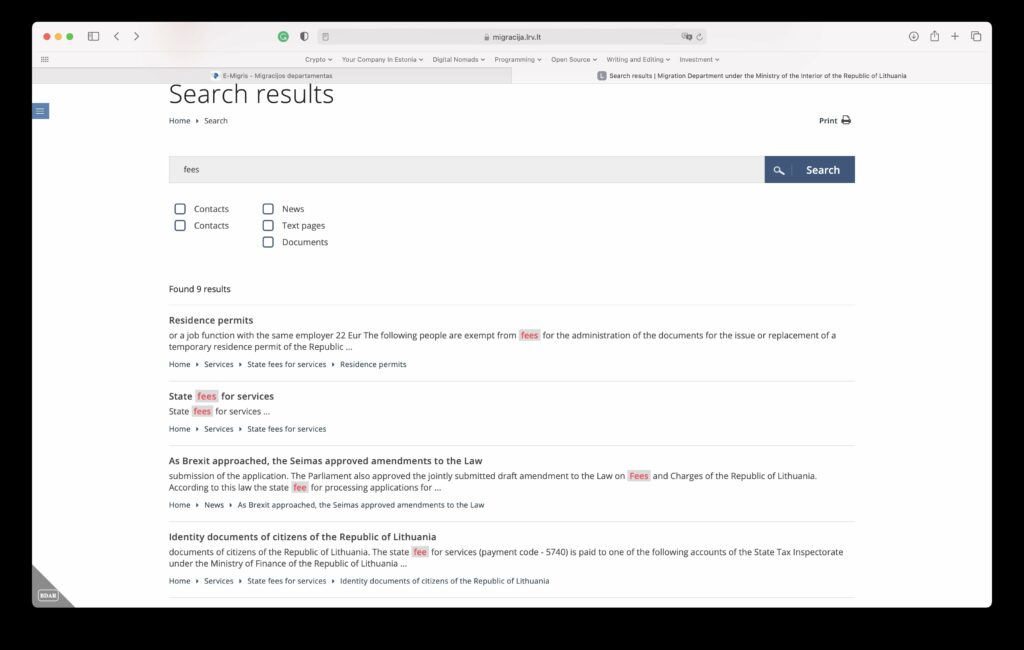
Kind of frustrated, I googled it and landed on a Wikipedia’s page that says the state fee is 90€. However, I didn’t want to pay anything before being sure that it was the right amount. So I sent them an email. To be honest, I had a very quick and kind answer in one day, confirming that the state fee was indeed 90€, so kudos to their support staff.
Still, asking the user for the amount to pay is certainly ridiculous, and reminded me of these pages where you can choose how much you want to pay to the author of a design or a song before downloading it. I gave them this feedback, so maybe when you read this, they have set this amount to 90€ on the website.
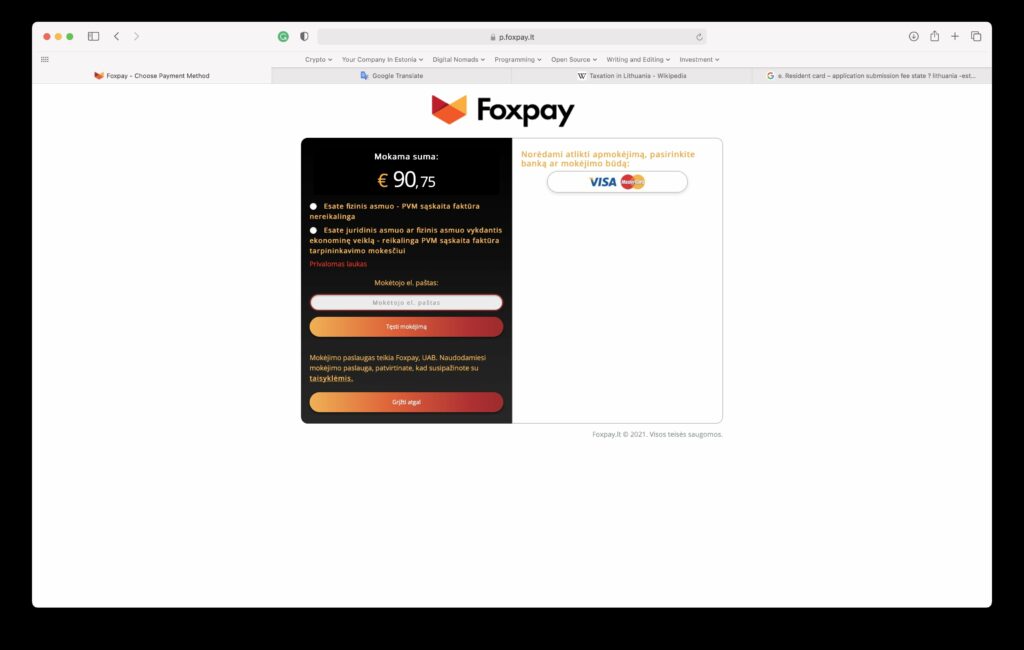
The payment process needs some work too. When you enter 90€ and click on “Pay via IISP”, you get to a page in Lithuanian with two options and some fields. Not very friendly indeed (if someone from the Lithuanian government reads this, please fix that).
I had to use Google translate. Choose the first option: “Esate fizinis asmuo – PVM sąskaita factūra nereikalinga”, and enter your email in the field “Mokėtojo el. paštas”, and click on the button just below that field (not the one at the very bottom).
Now if you did everything correctly (took me some trial and error), you can enter your card data next.
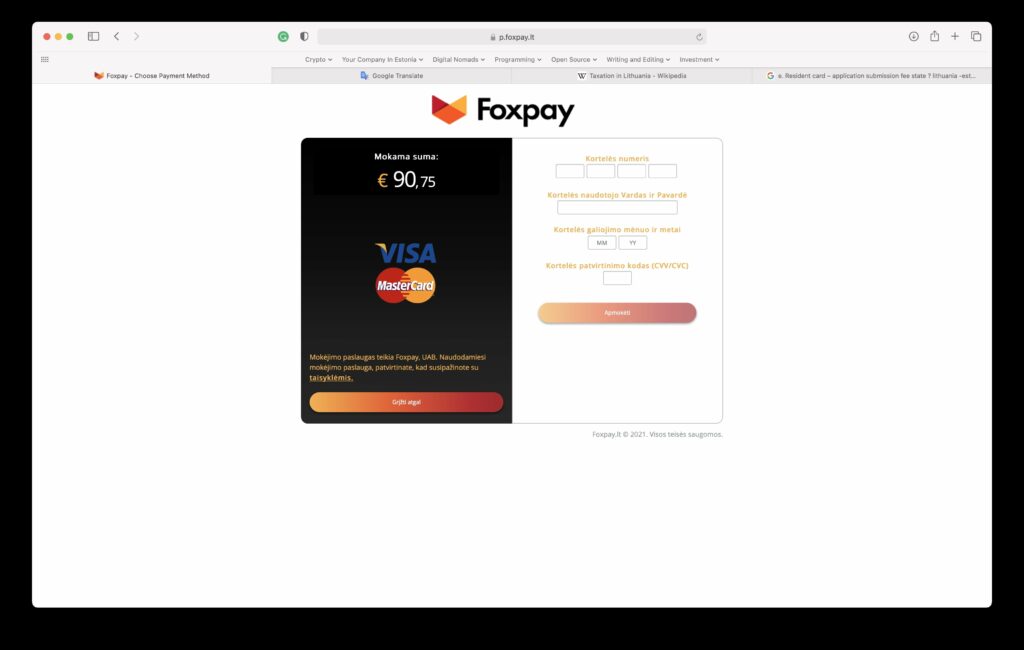
The first time I tried the payment using my Revolut card, it failed. If it happens to you, don’t worry, you will be able to try again.

The second time, with the same Revolut card, the payment worked, yay!
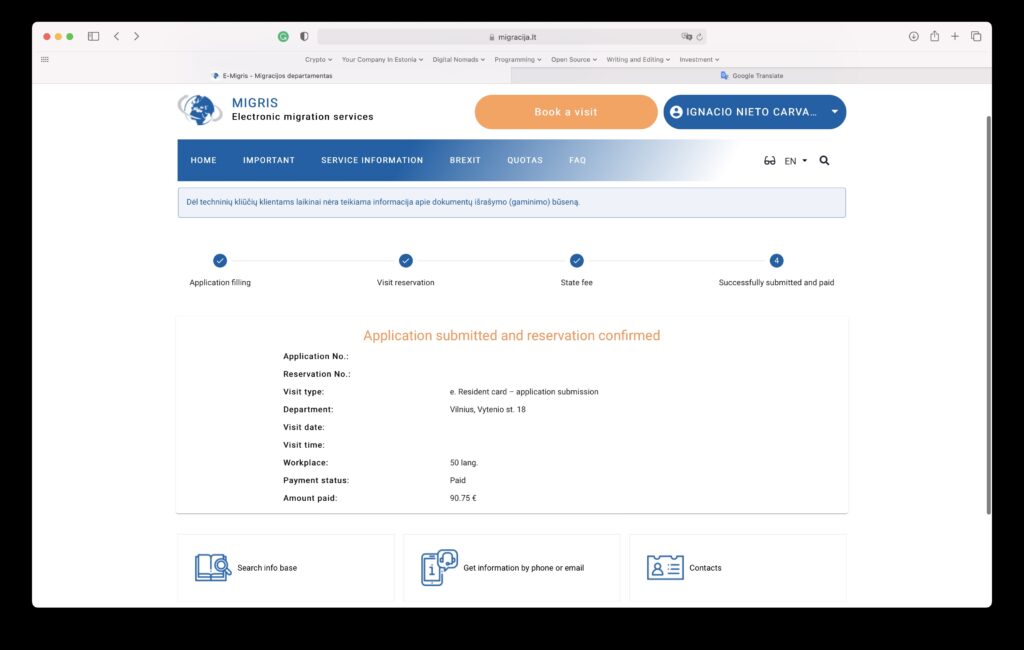
So I had my reservation confirmed to pick up my e-Residency pack. I will update this post after my visit to Lithuania in October.
Conclusion
In this post, I explain how to apply to become a Lithuanian e-Resident of Lithuania. The e-Residency program of Lithuania is still in its early alpha stages, so there’s a lot to improve, but still, it’s perfectly doable.
I am very excited to be an early adopter, and I wish the program will be a success and attract not only entrepreneurs, talent and business to Lithuania, but also competition to the world of e-Residencies.

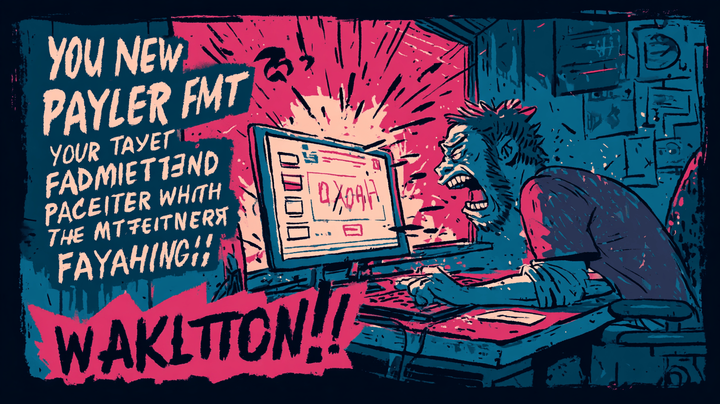


Comments ()